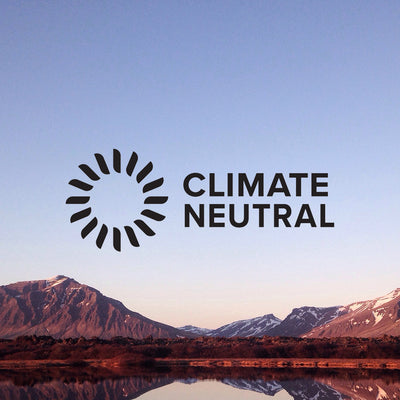Sustainable Camping: Out with the new, in with the old
Alisha McDarris is the co-founder and writer at terradrift.com, a sustainable travel and outdoor adventure blog and YouTube channel where gear reviews, how-tos, and guides help folks get outside to play more and do so safely, responsibly, and sustainably.
There’s little more thrilling than outfitting yourself with a few new pieces of gear. The excitement! The thrill! The compelling urge to get outside to use it as soon as humanly possible! But constantly buying brand-new gear is hard on the environment. Virgin materials, resource-intensive manufacturing processes, and harsh chemical dyes all contribute to harmful greenhouse gasses, and often, the well-loved gear we just replaced gets tossed in a landfill where it could take hundreds of years—if not longer—to break down.
But there is a solution: used gear. Buying used instead of new is good for the planet, good for our wallet, and good for overflowing landfills. And it’s still just as exciting. It’s new to you, after all. So if you want to make your camping setup more sustainable, consider buying used instead of new. Here’s how (and where).
Where to find used gear
If you’re not sure where to start when it comes to used gear, don’t sweat it; there are plenty of places to find it online or in person.
Start by checking at a local gear shop if you’re lucky enough to have one near you. Many local shops have used or consignment sections. Some cities even have stores dedicated entirely to used gear.
If there’s not a used gear shop where you live, keep an eye out for sample sales. Kammok isn’t the only brand that hosts them as a way to offer solid used gear at a discounted rate!
Next, check larger retailers like REI. The stores host several Garage Sale events per year that offer returned and used gear at deeply discounted rates. During COVID, most stores still place Garage Sale items around retail locations so savvy customers can still find a good deal. You do have to be an REI Co-op member to shop Garage Sale items, though, so keep that in mind.
Online is a great place to look for used gear too. REI has a used gear section, as do many outdoor brands like Patagonia, Arc’teryx, and The North Face. Another favorite is GearTrade.com, which is all used outdoor gear all the time. You may even find items with the tags still on!
Lastly, it never hurts to check sites like Ebay, Amazon Warehouse, Craigslist, or Facebook Marketplace. You can often find used outdoor gear in your own neighborhood.
How to score the best used gear
Of course, not all used gear is quality used gear. There’ll be plenty of used and abused, weathered and battered gear out there, but there’s also plenty of gear that’s barely been touched.
On online listings, look for wear ratings like good, fair, or excellent. Then check for details on what’s wrong with it if it’s not in great condition. Sometimes a pair of boots may have been worn thin. Other times, all that’s wrong with a tent is that it has a small puncture hole in the floor (more on repairing used gear below). Make sure the item you’re considering suits your purposes, then buy with confidence.
If you’re shopping locally, either from a retailer or individual, don’t be afraid to ask to unpack a sleeping bag, set up a tent, try on a jacket, or inflate a sleeping pad. Make sure it’s in as good of shape as the seller claims before you buy.
Check for warranties
Many quality outdoor gear brands and manufacturers offer excellent warranties with their gear. Osprey, for example, offers their All Mighty Guarantee on everything they make (whether or not you bought it used), and Kammok gear comes with a lifetime warranty too, which even backs their used gear!
So check which manufacturers offer lifetime warranties and find out if that warranty extends to a second owner or used gear sold directly from the manufacturer. Then, if it needs repairs, find out what it takes to ship it in and get it fixed up like new.
Repair worn or used gear
Finally, if you found an amazing piece of gear for a stellar price, but it has a small tear, defect, broken buckle, or the like, don’t shut it down just yet. Most gear can be repaired, and often, all that’s required is a wash, re-waterproofing, patch job or zipper lubrication. Learn how to perform basic maintenance on your gear and you’ll not only be able to keep it in use longer, you’ll be able to score great deals on slightly defective gear as most people won’t bother repairing it.
For example, I scored at least half off an expensive Big Agnes tent that was probably used once at an REI Garage Sale because it had a small tear in the floor. I took it home, patched it in two minutes, and the tent is just like new.
Sell your old gear
Now that you’ve replaced a few items in your gear closet with quality used camping gear, don’t forget about your old gear! If it’s still in decent or better working order, clean it up and resell it! Use sites like Craignslist or Marketplace or gear-specific sites like GearTrade.com. REI also lets members sell their used gear on REI.com now!
If it’s time to retire an item permanently (say, if a tent is falling apart at the seams, or a sleeping bag is so old it’s lost all of its loft), take a minute before tossing in the garbage can. Many materials, buckles, and accessories can be removed and reused on other repair or DIY projects. And some repair shops and universities may even take the old gear for certain specialized programs. It’s always worth it to check as most plastic and synthetic materials won’t break down in landfills.
Bottom line
Used gear is more sustainable than the shiniest new eco-friendly gear. So if it’s sustainable camping you want, it’s out with the new and in with the old! Fill that gear closet with quality used items and feel good about reducing your footprint, being kind to the planet, and saving yourself a few bucks in the process.




